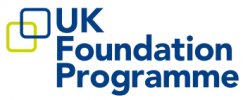The steps below are an example of how an FD could plan and undertake an SLE. Many other ways are possible and encouraged.
- The FD selects an FPC they wish to provide evidence for in their e-portfolio (for example, FPC 3. Holistic planning: diagnose and formulate treatment plans (with appropriate supervision) that include ethical consideration of the physical, psychological and social needs of the patient.)
- The FD selects the SLE type most relevant to the encounter they plan to be observed. This can also be done after the encounter takes place.
- The FD asks a trainer to observe an encounter (for example, a patient review where smoking cessation will be discussed) or series of encounters (for example, a ward round) and provide feedback.
- The FD reflects on the encounter (for example, I delivered all the relevant advice, the patient seemed satisfied with my answers to her questions, I think the fact her brother died of cancer made what I said more relevant…)
- The trainer gives verbal (and written) feedback.
- The FD considers the feedback and how the encounter reflects their abilities (for example, I did this well but still lack confidence to do it unsupervised, I hadn’t realised I used medical jargon when I explain things…)
- The FD plans the next step(s) (for example, I need further practice, I will use this as evidence of this capability/behaviour, I need to move onto more complex encounters, I need to learn more about health promotion…)
- The trainer/educational supervisor provides further insights/advice (for example, there is a smoking cessation clinic next Tuesday, you clearly know about smoking but should review other health promotion topics, you are clearly capable in this area and should concentrate on other aspects of the curriculum…). This section can be completed by the trainer or the FD.
- The FD considers other aspects of the curriculum that the SLE might provide evidence for and maps it to those (maximum 3 FPCs in total).
